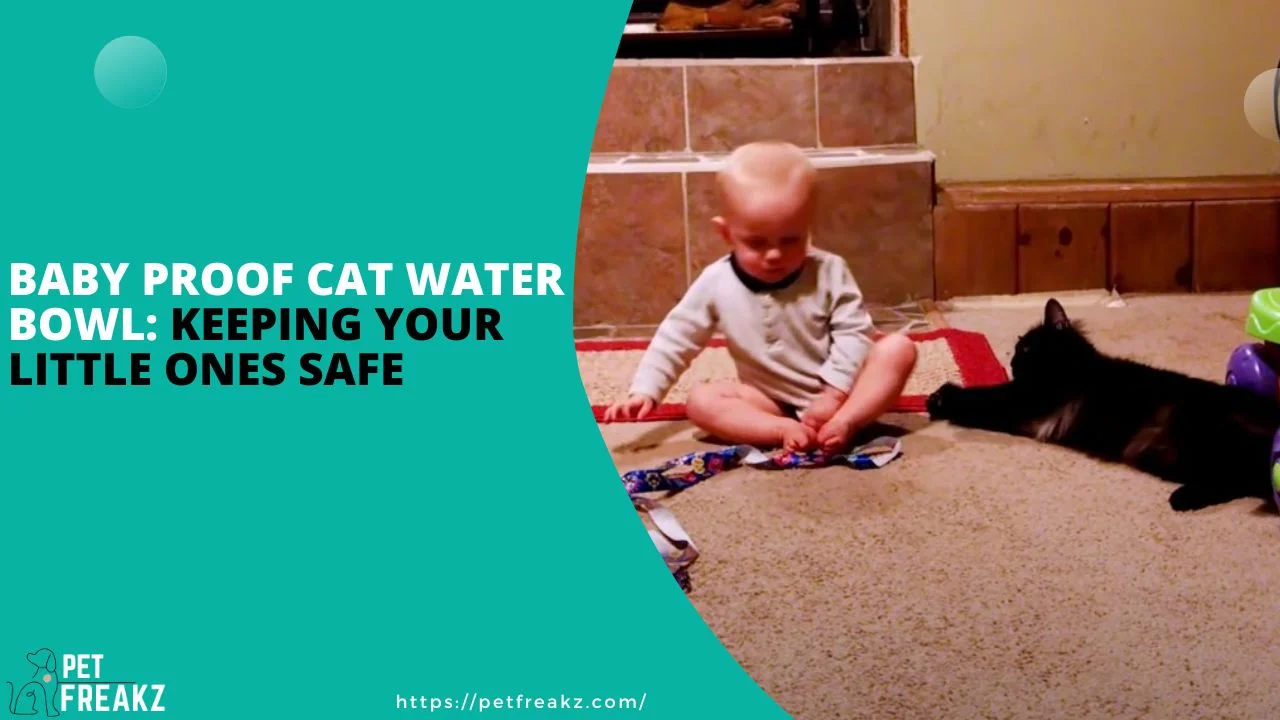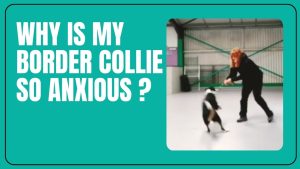Table of Contents
Introduction
Welcoming a baby into your home is a joyous occasion, but it also means ensuring that your living space is safe and secure for your little bundle of joy. For households with both babies and cats, one area of concern is the cat’s water bowl. A seemingly innocent item can pose potential risks if not properly managed. In this comprehensive guide, we will explore various strategies to baby-proof cat water bowls, providing peace of mind for parents and maintaining the well-being of both children and pets.
Baby-Proof Cat Water Bowl: Why is it Necessary?
Before diving into the details of baby-proofing a cat’s water bowl, let’s understand why it’s essential. Cats are curious creatures, and they often drink from their bowls by dipping their paws into the water and then licking them clean. This behaviour can lead to dirt and bacteria accumulating in the bowl, which might not be safe for your baby if they come into contact with the water. Moreover, there’s a risk of your little one tipping over the water bowl or playing with it, creating a potential mess and a slipping hazard.
How Do You Baby-Proof Cat Bowl?
A cat bowl filled with food or water can be an attraction for babies, but it’s crucial to prevent them from tampering with it. Baby-proofing your cat bowl can be done effectively with these methods:
Elevated Feeding Station
Invest in an elevated feeding station for your cat. This will raise the bowl off the ground, making it less accessible to your baby. Cats and dogs can comfortably reach their food, but your little one won’t be able to make a mess.
Use Non-Slip Bowls
Opt for non-slip cat bowls that have a stable base. This will prevent babies from accidentally knocking the bowl over, reducing the chances of spills and messes.
Feeding Schedule
Try to make a feeding schedule for your cat. By providing regular meals, you can predict when your cat will be eating, making it easier to supervise and ensure your baby stays away during those times.
Teach Boundaries
If your baby is old enough to understand basic instructions, teach them boundaries. Gently explain that the cat bowl is not for them to play with and guide them toward their own food or toys.
How Do I Stop My Baby From Eating Cat Food Bowls?
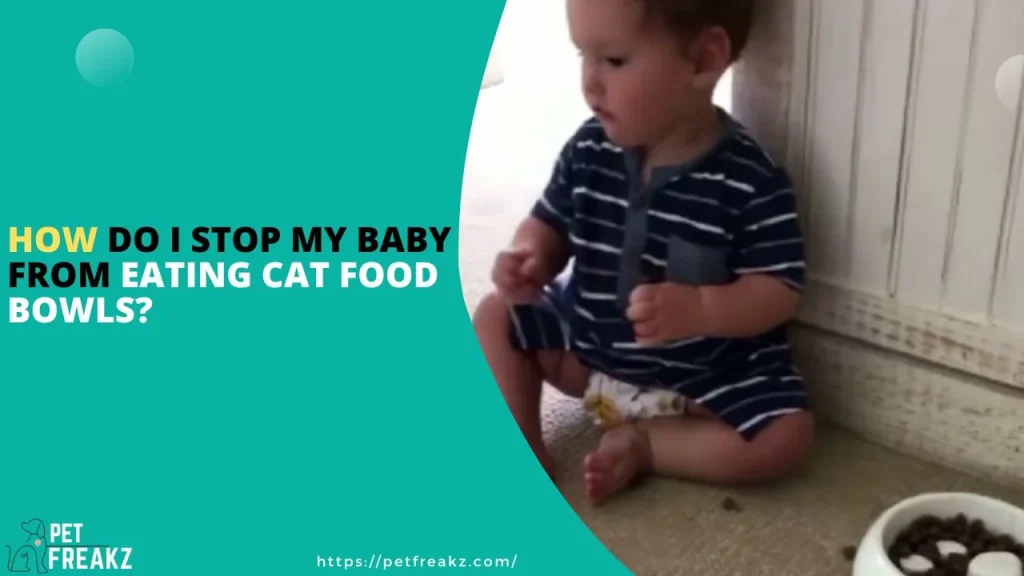
It’s not uncommon for babies to be curious about pet food, but consuming cat food can be harmful to their health. Follow these measures to prevent your baby from eating cat food:
Supervise Meals
When it’s mealtime for your cat, make sure your baby is safely out of reach. Supervise feeding times to ensure that your baby doesn’t attempt to eat from the cat’s bowl.
Store Cat Food Safely
Keep cat food containers out of your baby’s reach, and ensure they are tightly sealed. Store the food in a secure cupboard or pantry where your little one cannot access it.
Create a Pet Feeding Zone
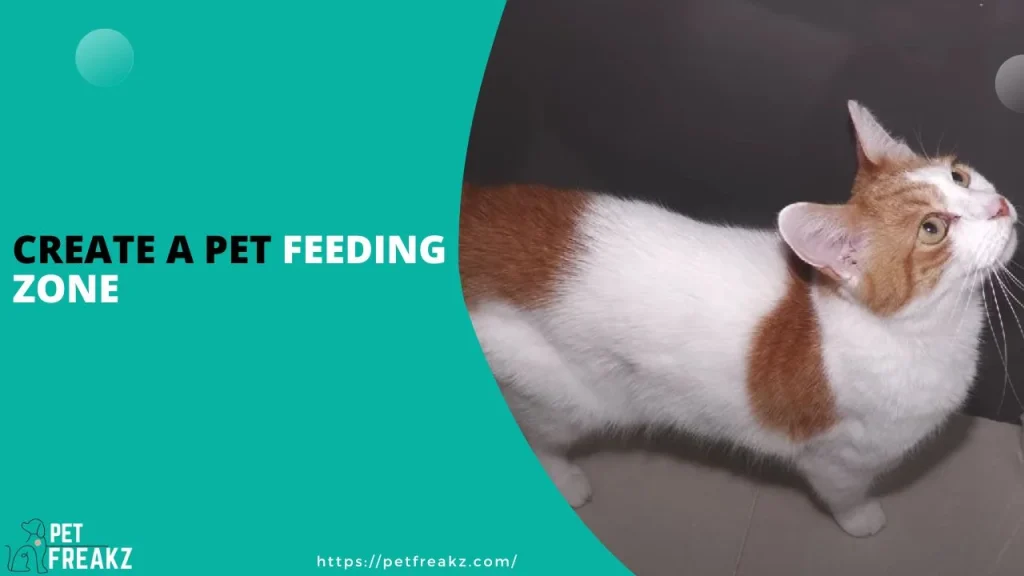
Designate a specific area for your cat’s feeding bowl, ideally in a location that is off-limits to your baby. This helps create a clear boundary and reduces the chances of your baby accessing the cat’s food.
Use Distractors
Offer your baby alternative toys or snacks when your cat is eating to divert their attention away from the cat food bowl.
How Do I Keep My Toddler From Eating Cat Food?
Toddlers love to explore, and cat food might catch their attention. Follow these tips to prevent your toddler from snacking on cat food:
Place Cat Food Out of Reach
Keep cat food in an area that is inaccessible to your toddler. Use high shelves or closed cupboards to store the cat food securely.
Create a Pet-Free Zone for Feeding
Designate an area specifically for feeding your cat, and ensure it’s away from places where your toddler plays or eats.
Explain the Difference Between Foods
Depending on your toddler’s age, explain the difference between human food and pet food. Teach them that cat food is only for cats and not for them to eat.
Keep Cat Food Covered
If your cat takes time to finish its meal, cover the cat food bowl when not in use. This prevents your toddler from reaching into it.
How Do I Keep My Toddler Out of the Dog’s Water Bowl?
Toddlers are known for their curious nature, and a dog’s water bowl might catch their interest. It’s the same as before these are common preventive steps you can follow to keep your toddler away from the dog’s water bowl:
Elevated Water Bowl
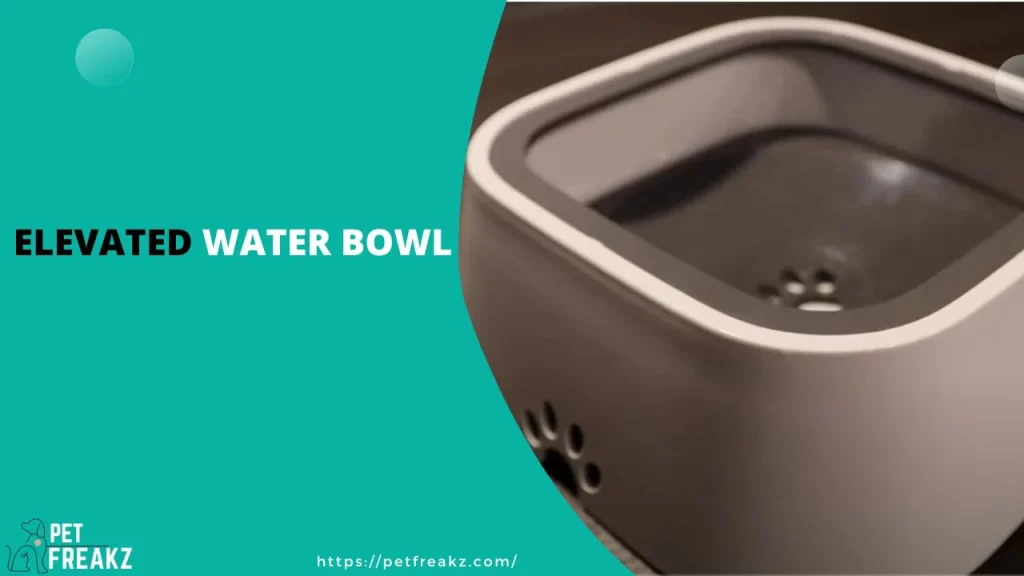
Similar to baby-proofing a cat bowl, consider using an elevated water bowl for your dog. This will keep the water at a height that is inaccessible to your toddler.
Teach Boundaries and “Leave It” Command
Teach your toddler to respect the dog’s belongings and establish a “leave it” command. When your child approaches the water bowl, use the command to deter them from touching it.
Supervise Interactions
Always supervise your toddler’s interactions with pets, especially during meal or water times. This allows you to intervene if your child attempts to play with the water bowl.
Provide Distractions
Keep your toddler engaged with age-appropriate toys and activities to distract them from the dog’s water bowl.
What Happens If a Baby Eats Cat Food?
Accidentally consuming cat food can be concerning for parents. Here’s what could happen if a baby eats cat food:
Upset Stomach
Cat food is not formulated for human consumption, and eating it may cause digestive issues like stomach upset, diarrhea, or vomiting.
Choking Hazard
Some types of cat food can be dry and hard, posing a choking hazard for babies, especially those with limited chewing ability.
Potential Allergic Reactions
Babies might be allergic to certain ingredients in cat food, leading to skin rashes or respiratory problems.
Seek Medical Attention if Necessary
If your baby accidentally consumes cat food and experiences any adverse reactions, seek immediate medical attention.
How Do I Keep My Baby Out of Kitty Litter?
Babies are naturally curious explorers, and their tiny hands tend to grab anything within reach. Unfortunately, this curiosity can lead them to the kitty litter box, which is a definite no-go zone for little ones. To ensure your baby stays away from kitty litter, follow these steps:
Choose a Safe and Elevated Location for the Litter Box
Place the litter box in a location that is not easily accessible to your baby. Consider elevated spots like a countertop or a shelf that your cat can access but your baby cannot. This will create a barrier between your baby and the litter box.
Install Baby Gates
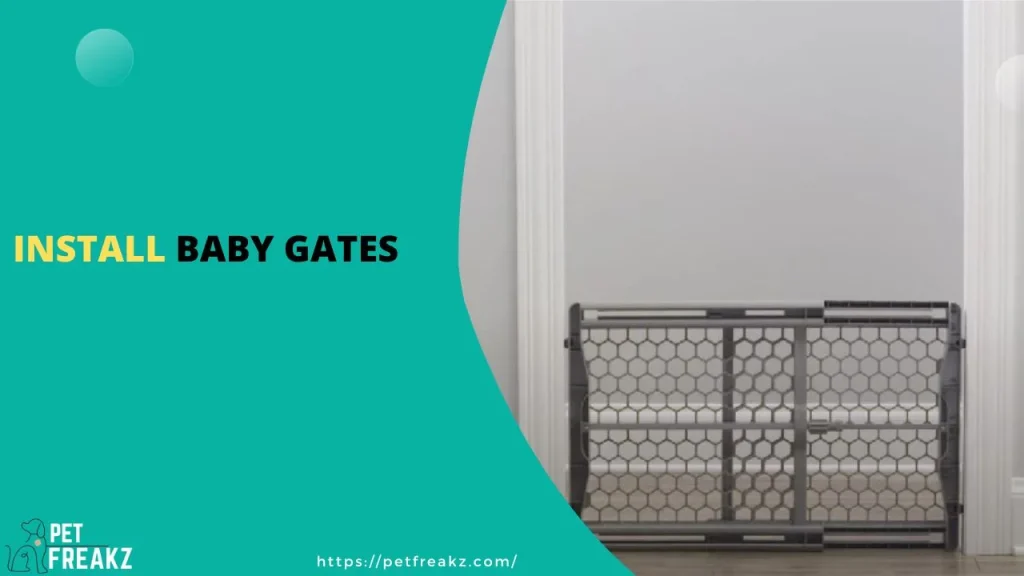
Baby gates are an excellent solution for keeping babies out of restricted areas, including rooms where the litter box is kept. Install a sturdy baby gate to create a physical barrier and prevent your baby from reaching the litter box.
Keep the Litter Box Clean and Covered
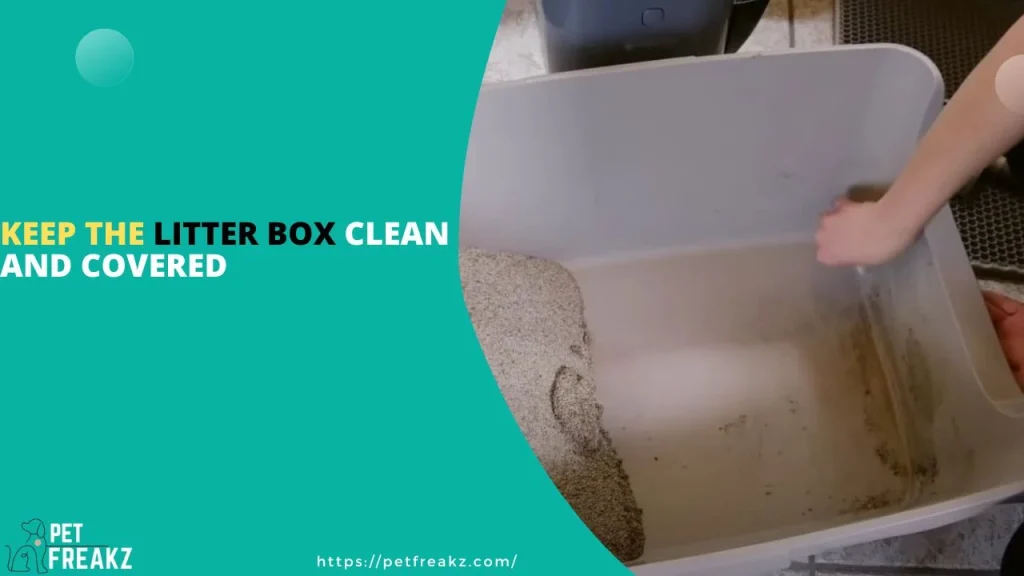
Cats are more likely to use a covered litter box, and this setup has the added advantage of keeping the litter out of your baby’s reach. Ensure you clean the litter box regularly to maintain good hygiene and prevent any unpleasant smells.
Distract Your Baby
Babies often get drawn to new and intriguing things. Offer them engaging toys and activities to divert their attention from the litter box. Providing an alternative source of curiosity can help keep them away from the litter area.
Is it Safe to Use Cat Litter for Babies?
Many parents wonder if cat litter is safe to use for other purposes, such as for babies. Here’s what you need to know:
Avoid Using Cat Litter for Babies
Cat litter is not intended for use with babies. It may contain harmful substances and bacteria that can be dangerous for infants. Stick to using products specifically designed for baby care.
Choose Safe Alternatives
For diaper changes, opt for disposable or reusable baby-safe changing pads. These are designed to keep your baby clean and comfortable without exposing them to potential hazards.
Maintain Good Hygiene
Whether you have pets or not, maintaining good hygiene practices is essential for your baby’s health. Regularly clean and disinfect changing areas to ensure a safe environment for your little one.
FAQs
My cat loves splashing water everywhere. What can I do to stop this behaviour?
Cats enjoy water play, but you can discourage this behaviour by providing a separate water source, such as a cat-friendly water fountain. This way, your cat can play with the flowing water while keeping the regular water bowl untouched.
Is it safe for my baby to share a water bowl with the cat?
It’s not recommended for babies to share a water bowl with the cat due to potential hygiene issues. Cats may carry bacteria on their paws, and sharing a bowl can lead to contamination.
Are there any alternatives to traditional water bowls for cats?
Yes, there are alternatives such as cat water fountains, elevated water bowls, and spill-proof bowls. These options cater to your cat’s preferences while ensuring your baby’s safety.
How do I introduce my baby to our pets safely?
When introducing your baby to pets, do so gradually and under supervision. Allow your pets to sniff and get used to the baby’s scent before close interactions.
Can my baby play with the pet’s toys?
While it may seem harmless, it’s best to avoid letting your baby play with the pet’s toys to prevent the transmission of germs.
Should I be concerned about my baby crawling near the pet’s bowls?
Yes, it’s essential to keep your baby away from the pet’s bowls to avoid potential hazards and prevent the spread of germs.
Conclusion
Baby-proofing the cat water bowl is an important aspect of creating a safe and harmonious living environment for both your little ones and furry friends. By understanding your cat’s behaviour, needs, and preferences, you can implement effective strategies to ensure your baby’s safety and maintain your pet’s well-being. Whether it’s using elevated water bowls, spill-proof solutions, or cat-friendly water fountains, there are various options available to suit your specific situation.
